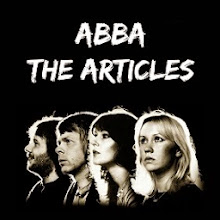 ABBA on tour – burdened by stress and hastiness they fly to their next performance. Other groups are on the road for 300 days every year. This is impossible for the four Swedes. They rarely appear on stage.
ABBA on tour – burdened by stress and hastiness they fly to their next performance. Other groups are on the road for 300 days every year. This is impossible for the four Swedes. They rarely appear on stage.ABBA’s first European tour kicked off on November 17, 1974 at the Falkoner theatre in Copenhagen. The omens weren’t very positive. On the contrary. For starters, there were vicious attacks by the media and bitter criticisms. Long before their triumph in Brighton, ABBA had announced a tour through the Swedish folk parks. The date: midsummer. The duration: one month. After they hit the number one spot with ‘Waterloo’, everything changed. All at once, television broadcasting companies all over the world were interested in the four Swedes. Europe was waiting for ABBA. For ABBA this meant: we have to strike the iron while it is still hot.
ABBA and Stig were spending their Easter holiday on their island and they discussed the problem. Their decision was unanimous: the tour through Sweden would be cancelled.
The media and the tour organisers reacted with furious criticism: “With the help of the Swedish population, ABBA has won an important international music contest. And now this...” Another newspaper wrote about “an extremely bad business decision.” A promoter said: “Without any doubt, this is by far the most malicious betrayal that I have experienced during all those years in this business.”
Stig was surprised about all these vicious reactions: “I expected a little more understanding for our motives.”
From ABBA’s point of view, the cancellation was understandable. Finally, the four musicians had the chance to achieve an international breakthrough. With this tour through Sweden, they would lose two important months and on top of that they would perform in front of an audience for which the four ABBAs were already a household name.
ABBA started preparations for their first European tour with zest. As their opening act, they engaged The Beatmakers, who also functioned as ABBA’s musical accompaniment. Agnetha and Anni-Frid took dancing lessons with the well-known choreographer Graham Tainton.
The show had its premiere in Copenhagen. After that, performances followed in Hannover, Munich, Frankfurt, Berlin, Nürnberg, Düsseldorf, Bremen, Hamburg, in Austria and Switzerland. Although the audience was impressed everywhere, the tour wasn’t an overwhelming success. The concerts attracted enough visitors, but they weren’t sold out.
The tour itself was no picnic either. Anni-Frid: “We were on the road for fourteen days and performed almost every night. When we didn’t sing, we travelled. The only things that I remember are buses, airplanes, concert halls and hotels.” Especially for Agnetha, who hates to leave her little daughter Linda alone, it was a heavy mental ordeal. She admits: “I can’t be away from home for more than 10 or 14 days. For me, it’s very difficult to travel around constantly and change environments.”
And Benny explains the fact that ABBA – unlike other groups – rarely performs live like this: “Björn and I are working as producers and composers as well. Because of this, we can’t – like other groups – be on the road for 300 days per year and accept every television offer.”
The tour ended in January 1975 with performances in Scandinavia. And here, ABBA finally found their big success for which they had been working for so long. Sold out venues everywhere. Their performance in Gothenburg attracted 7.000 fans. A couple of thousands had to stay outside. There just wasn’t room for them anymore.
In Stockholm, the concert hall was completely sold out as well. Among the enthusiastic audience was the well-known promoter Sid Bernstein, who was working on ABBA’s breakthrough in America. Sid was overwhelmed by the performance: “One of the best shows that’s out there at the moment.”
ABBA’s tour through the Swedish folk parks was the icing on the cake after their European tour. Due to Agnetha’s illness – she caught a severe bronchitis and had a 40 degree fever – the date had to be postponed, but at the end of June the time had come. Their concerts turned out to be highlights in the Swedish show business. 19.000 enthusiastic fans saw ABBA perform at Grona Lund in Stockholm, 8.000 in Liseberg Gothenburg, 12.000 in Malmö.
But there wasn’t much money to be made of a tour like this. Björn: “There’s only one place in this world where you can make money of a tour. That’s America. There are enough venues that can hold 20.000 or 30.000 fans over there. But at the same time, America is the most strenuous thing that’s around in show business.”
Why does ABBA still go on tour then? Stig: “We simply want to show the fans that ABBA is alive and that they are not a studio project, that they can sing live with an orchestra.”



No comments:
Post a Comment